Crop Report
In general, the corn and soybean fields look good. Weed escapes are beginning to show in a few soybean fields. Early planted soybean fields are in the R3 stage. Early planted corn fields are R3 stage with late planted fields in R1 (silking) stage. Corn leaf aphids are making a presence in the R1 corn fields, but at this time there is no need to apply control measures. Silking corn fields should be monitored for aphid numbers and whether the crop is suffering moisture stress. Current IL thresholds for aphid control in corn is >50% of the corn plants have more than 100 aphids per plant and the plant is in moisture stress; OR >3% of the corn plants have heavily infested tassels and upper corn leaves plus suffering moisture stress. Remember aphids are controlled by insect predators, diseases and rainfall washing them off.
April planted corn has fully pollinated. Both corn and soybeans have had fungicide and insecticide applications. The late May planted soybeans are not there yet and only at R2. Mid May soybeans have canopied. Stink bug feeding and bacterial leaf diseases showing up in corn. Could use more rain soon.
Continue to scout soybean fields for regrowth on waterhemp. Be on the lookout for aphids in corn fields. Scout corn fields once a week for disease presence. Soybeans are adding regrowth of vegetation but will return to R1/R2 in the near future. Be ready for applications when we reach R2 growth stage.
Widespread precipitation across the area has been a big benefit to the crop. Most of central IL did not have much reported damage from the derecho on the night of the 15th. Rain amounts varied, but most of the area received some much needed rain from Beryl and the storms following. Now to keep our eyes on what could be optimal conditions for disease progression especially considering that the planting dates are wider than normal.
Monday night’s derecho brought significant rainfall to the area. Most parts of Logan, Menard, and Sangamon counties received 1.5 to nearly 3 inches of rain. This rain, combined with the rain received from Hurricane Beryl, caused some low-lying areas to have standing water. Thankfully, there does not appear to be any signs of wind damage. Nearly all of the corn across the three counties has tasseled, and pollination is beginning. Soybeans also look good, almost all in the R2 to R3 stages. Waterhemp continues to be a prevalent issue. Japanese beetles are also present, but damage has yet to reach the economic threshold in the fields I have walked through.
An active week on the weather front in Northeast Illinois. Several storms packing high winds roared through the area. Despite this, to date, I have heard few reports of down corn. Regional corn fields are at varied maturities because of planting dates. The earliest planted has reached R2 (Blister), the developing kernels appear as clear fluid containing whitish blisters on the cob, silks are brown and drying rapidly. Most soy is also at R2 (full bloom) and closing canopies in 30″ rows. Fungicide applications are underway by plane, helicopter and drone (and likely ground rigs when field conditions permit). I noted isolated incidence of Gray Leaf Spot and Tar Spot this week, I plan on revisiting those corn fields within the week to reassess. On some corn plants lower leaves exhibit the inverted V symptoms of nitrogen deficiency. Leaf senescence occurs naturally and is identified by corn leaves losing greenness due to a reduction in chlorophyll. Not all nutrients are lost, some assimilates are “remobilized” and transferred to the ear and kernels so that grain fill can be sustained and completed. While a natural process, lower leaf senescence and its counterpart, top dieback, can also be initiated by crop stresses and bears watching in future field visits.


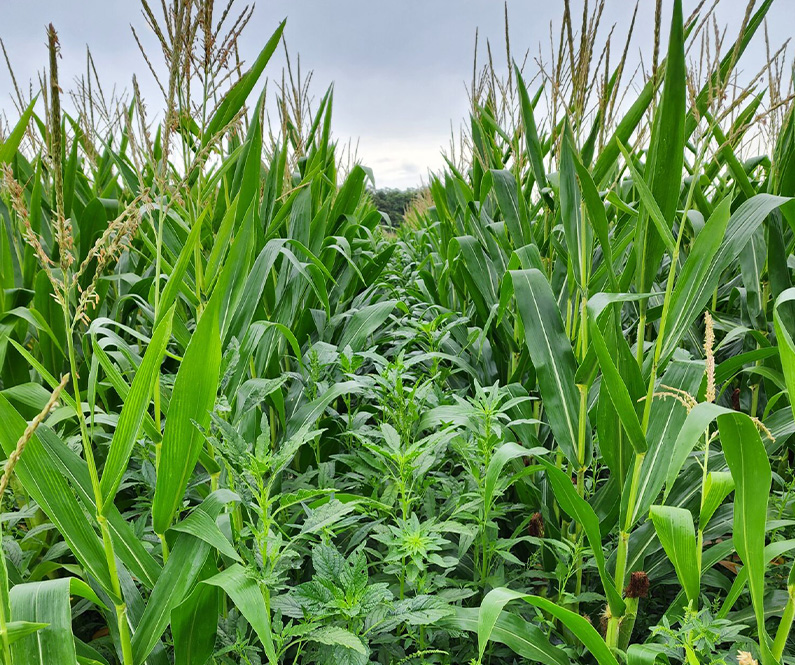
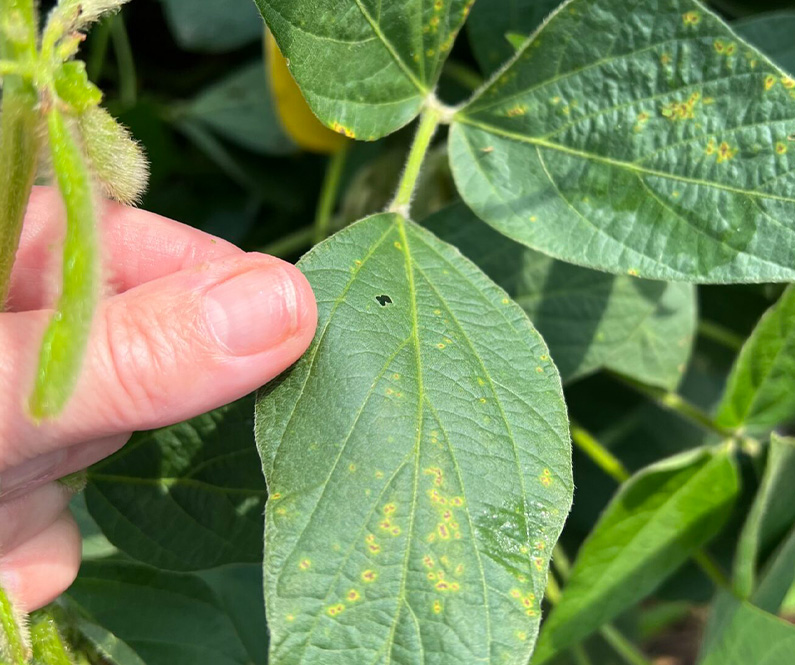
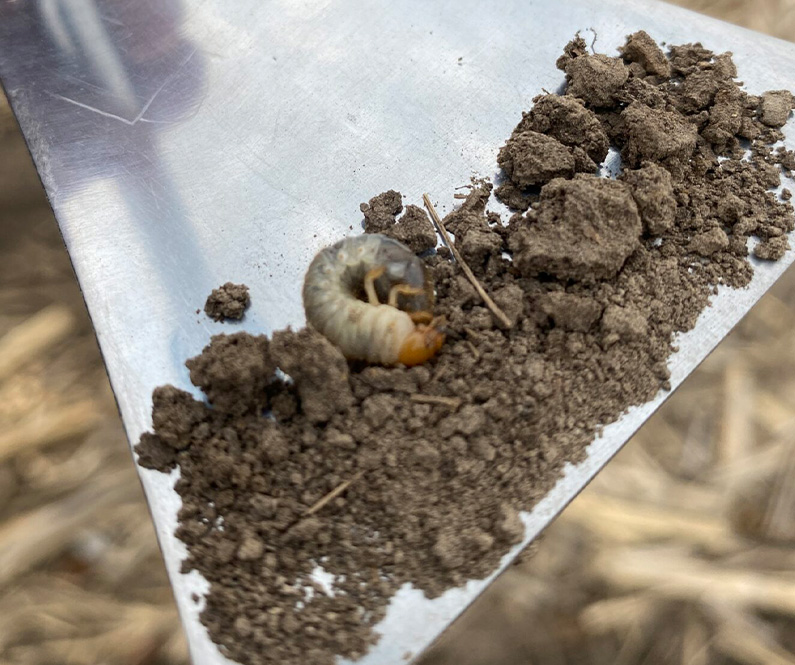
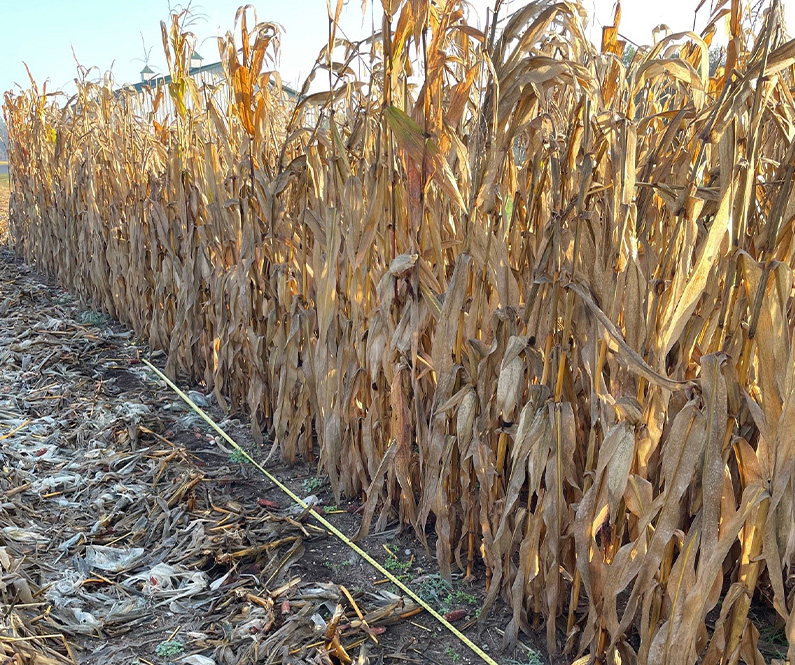
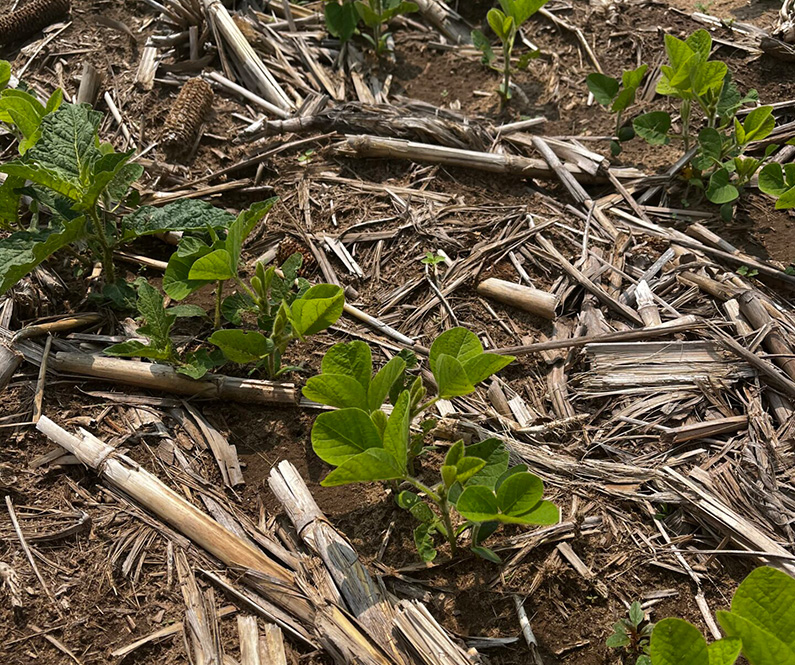
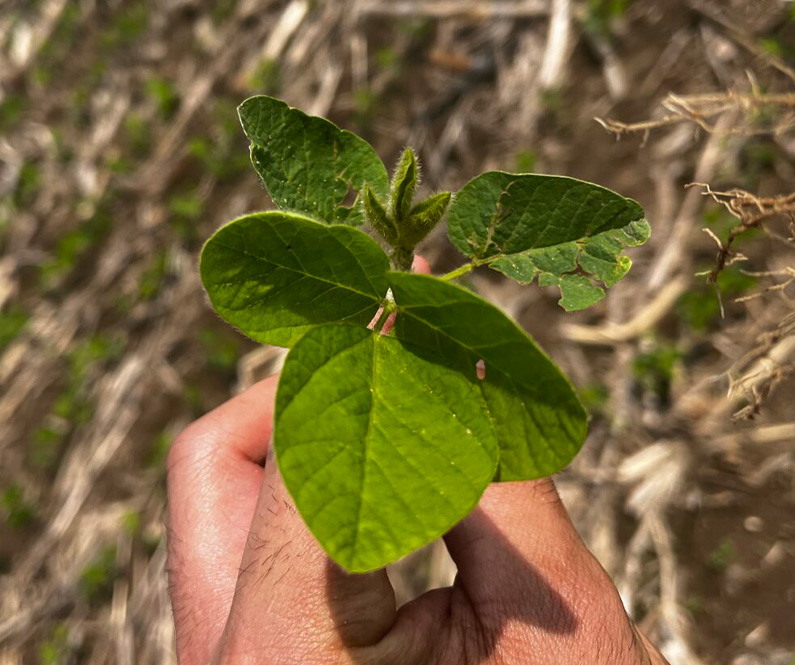
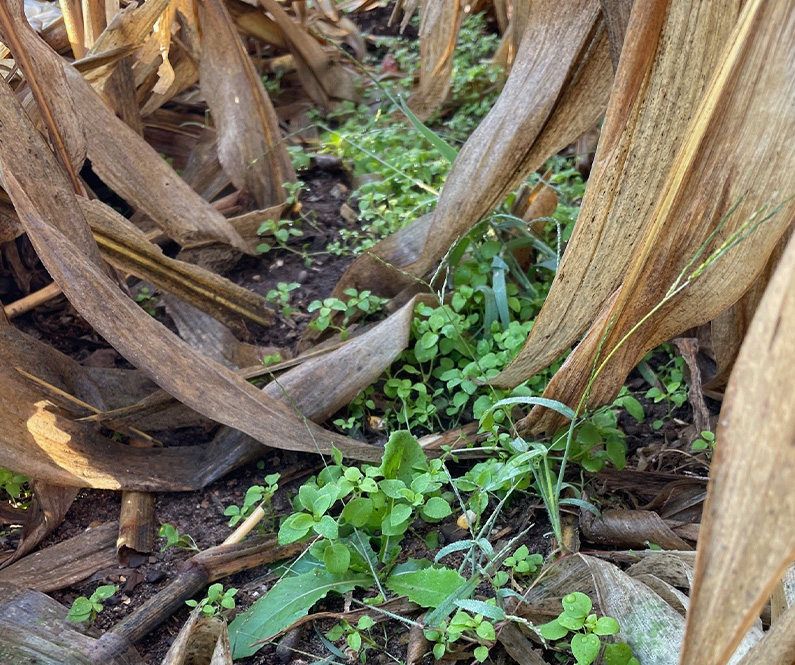
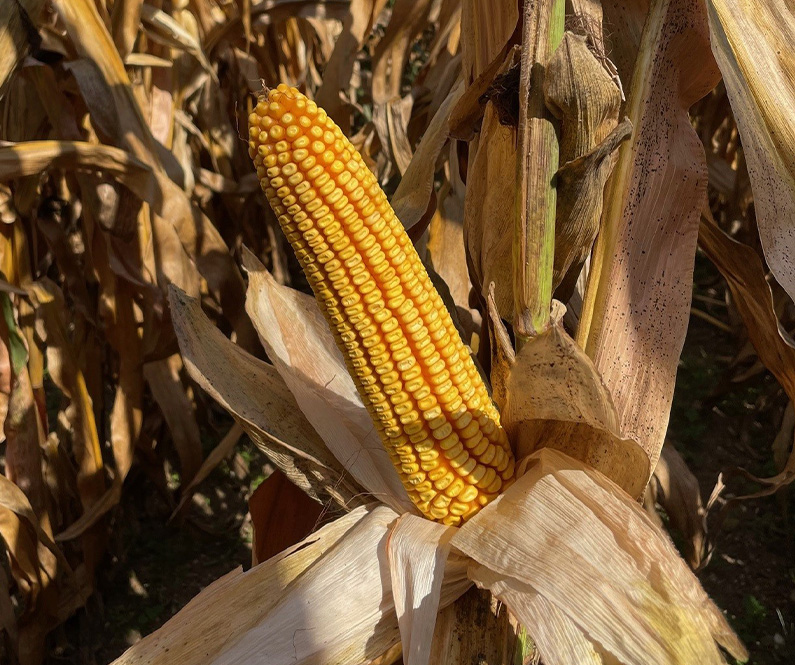


 and then
and then